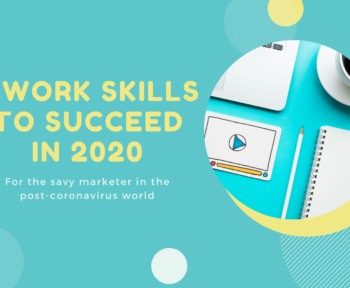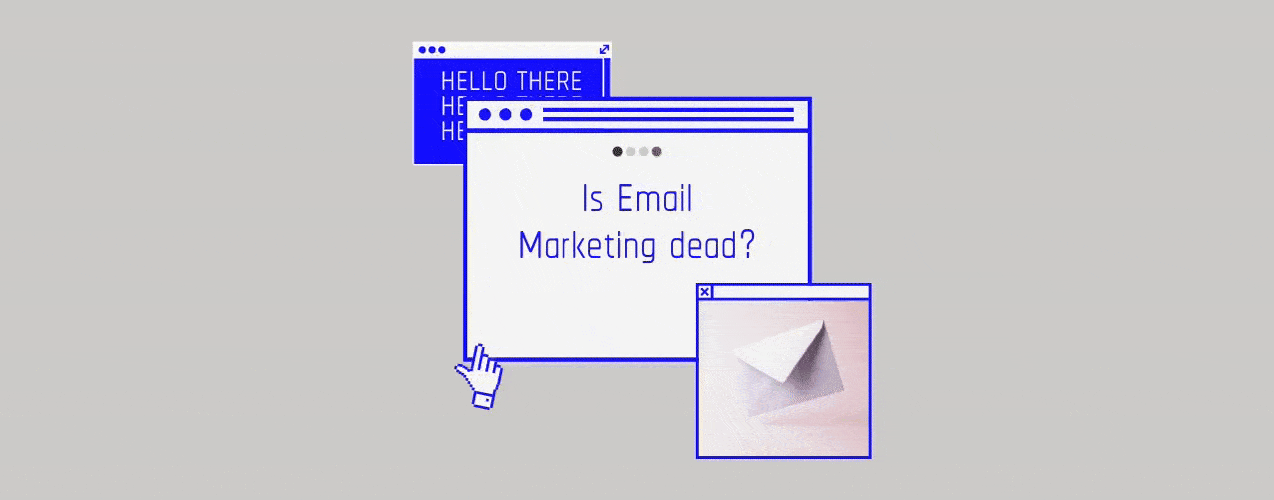
Learn how to remain relevant in an environment where every conversion counts.
Ever wondered how many emails are sent per day around the world? How about the number of emails that hit your inbox every day? Take a moment to think about it…
According to data, about 269 billion emails were sent and received each day in 2017. Crazy right? Well, that figure is expected to grow to almost 320 billion emails in 2021, according to Statista.

If You Think Email Is Dead, Think Again
What you’re thinking it’s true. Those numbers mean that modern inboxes are noisy, crowded, and extremely competitive. This now represents a huge challenge for marketers that have to develop and apply practical and competitive strategies in order to stand out among the competition.
But regardless of what people say about email, it is still one of the most popular and cost-effective channels to target audiences and generate sales. In fact, the only thing more powerful than email marketing is search engine traffic. So, once you’ve learned the basics of SEO, it’s time to focus on your email marketing campaigns to increase sales and build strong relationships with customers.
This more traditional form of Marketing is currently competing for hand-to-hand with channels such as social, voice, and augmented reality as the means for reaching today’s modern audience. And, in fact, it’s doing a pretty good job holding its own among newer channels and technologies.
“Email marketing is 40x more effective than social media marketing when it comes to gaining new customers and the number of email users worldwide is forecast to rise to 2.9 billion by 2019”.
– MCKinney
You’ve got mail!
Ever wondered how email is a huge part of your daily life? From work emails to personal ones, consumers are spending approximately five hours a day checking work email (three-plus hours a day) and personal email (two-plus hours a day), according to “Adobe Email Usage Study”. In fact, email is so integrated into our lives that we’re actually constantly refreshing our inboxes.
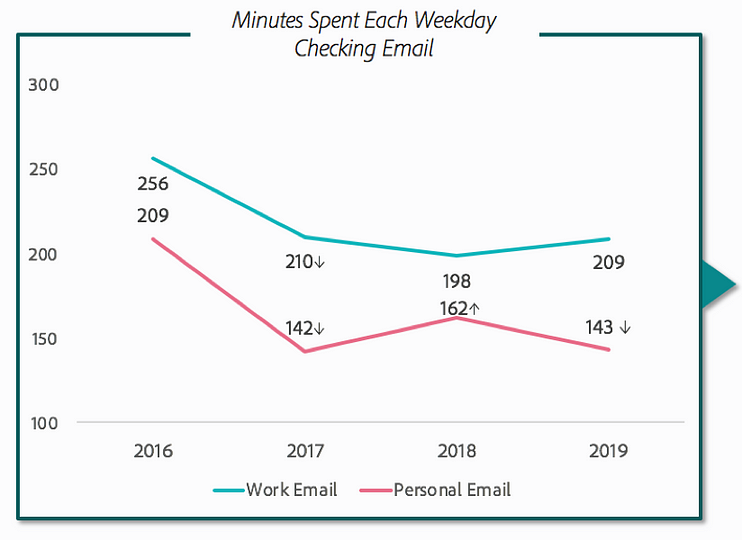
“It’s incredibly clear that we’re all comfortable with email, and we’ve integrated it into almost every part of our day. While it’s important to note that the time we spend checking email overall has declined since 2016, the frequency remains substantial. The Adobe survey findings solidify how important email still is in the everyday lives of our customers, and this means there is still a big opportunity for marketers to utilize email to engage with people in relevant and useful ways.”
– Sarah Kennedy, VP of Global Marketing, Digital Experiences, ADOBE
We know e-mail is universal, that people are using it daily and that it is an important and powerful channel of communication. But what about consumer behavior? For marketers to be able to understand what consumers want and be able to make campaigns stand out within their inboxes, they need to understand more about how users (and potential costumers) use and perceive e-mail.
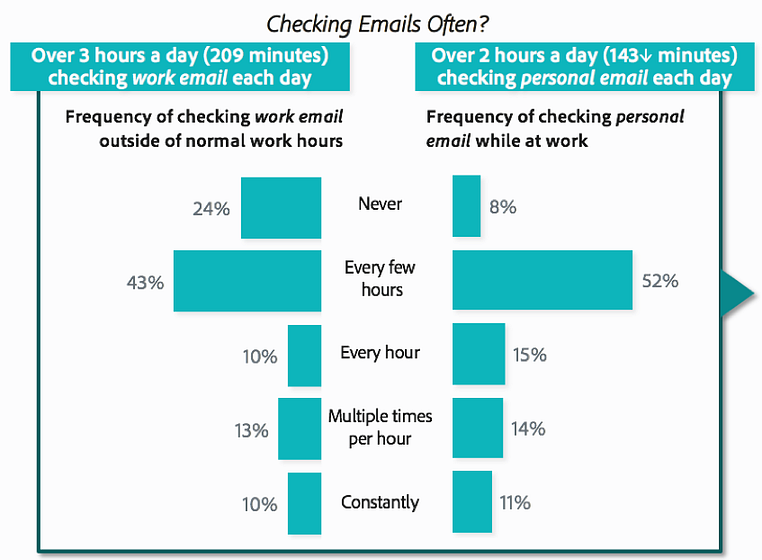
According to data:
- Work e-mails are opened more frequently than personal emails (80% vs. 57%);
- Consumers prefer to receive offers via email (versus social media and other marketing channels);
- 4.24% of individuals who visit a site from a link in an email promotion are likely to buy something, as compared to only 2.49% who click a link from a social media site;
- Consumers check email: 1) while watching TV; 2) in bed; 3) during work meetings; 4) during meals; 5) while driving — and even in the bathroom.
- Almost half (48%) of consumers said they don’t check their work emails until they start working;
- 25% of consumers said they first check their personal email while still in bed, 42% check while getting ready or eating breakfast, 16% check en route to work, and 17% check when they get into work.
So what can you do to stand out within the inbox? You need emails that are doing something unique and special.
But Can Email Marketing Do For Me?
This core component if not the cornerstone of marketing campaigns performs better than social media and other channels. Email remains the number one option for direct marketing and if you’re wondering why you should invest in email marketing, here’s just a few reasons:
- An effective way to KEEP IN TOUCH WITH COSTUMERS
Not only a way of communicating with new costumers or prospects but also a communication channel for keeping them up to date with what’s happening with your business; - An effective way to REACH A LARGER AUDIENCE
“Email is the currency of the web”. Do you know anyone that is online and doesn’t have an active email address? Neither do we. And while social media might seem more popular than ever, consumers actually prefer to receive promotional content through email.
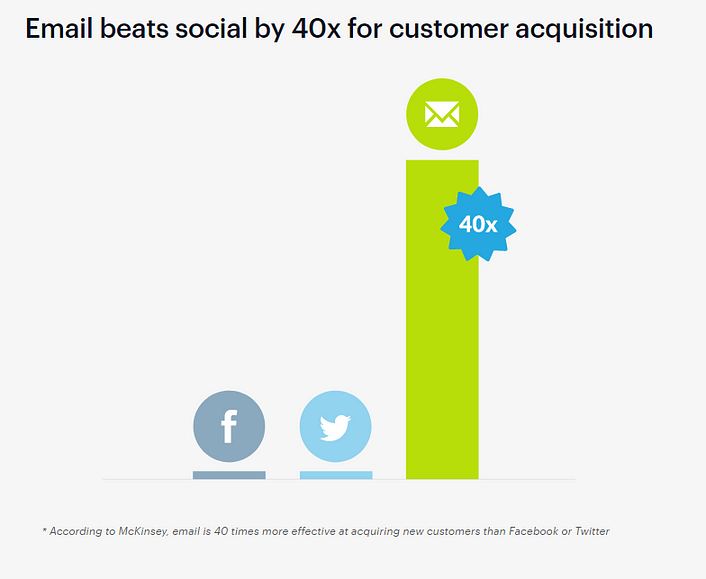
72% of people prefer to receive promotional content through email, compared to 17% who prefer social media.
- An effective way to DRIVE CONVERSION
When it comes to conversions, there isn’t a more powerful channel than email. In fact, the average click-through rate of an email campaign is around 3% (of total recipients), whereas the average click-through rate from a tweet is around 0.5%. - An effective way to REACH HIGHER ROI
E- Marketing yields an average 3,800% return on investment for businesses and for every $1 spent on email marketing, the average return on investment is $38.
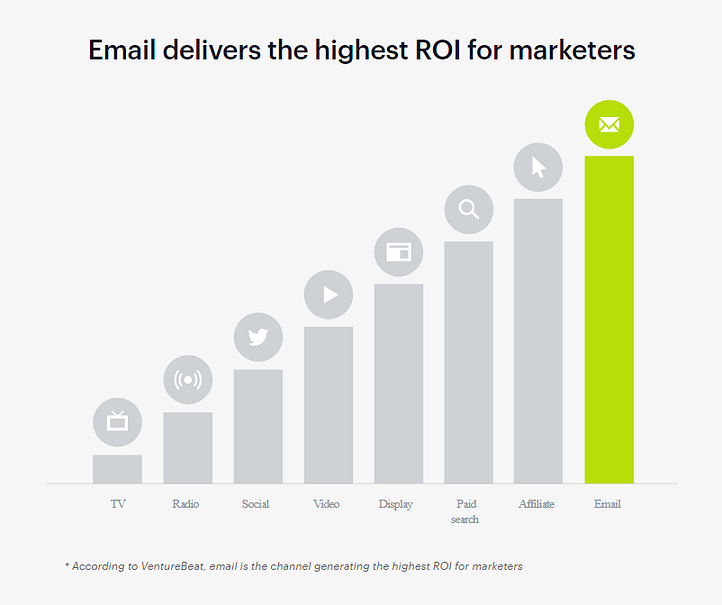
Time to click “send”
But what’s the best way to go about starting an email campaign, and what are some of the best practices of email marketing? We’ve compiled 10 quick and easy tips that will help you fine-tune your campaign and boost your sales.
1. Carefully Segment Your Email List
E-mail segmentation is an effective marketing strategy that can increase opening rates and conversion. According to HubSpot, “marketers who use segmented campaigns note as much as a 760% increase in revenue”.
Tools like MailChimp, Sendinblue, Hubspot, etc., give marketers more control over the process of segmentation. This powerful mechanism makes professionals able to capitalise databases and personalise emails in an effective way.

Since segmentation can be a tricky process, you should start by creating segmentation groups, based on consumer profiles. Let’s dive into some tips to slay your email marketing database:
- Segmenting by demographics. This includes age, gender, geography, persona, and education level;
- Segmenting by past purchases and buying cycle;
- Classify subscribers on a daily, weekly or monthly basis;
- Segment the subscribers who are loyal to your company and look forward to your emails;
- New subscribers, who don’t know much about your brand product and services.
Marketers should look at segmentation as a long-term investment. A study by Lyris reveals that 39% of businesses that segmented their list experienced an increased open rate, greater customer retention, and greater customer acquisition.
2. Only Take Voluntary Subscriptions
Keep it real, keep it natural. This is how you build a truthful connection with your customer or prospects. So don’t make subscribing to your mailing list mandatory (especially at checkout!) — costumers can perceive this as forceful and react negatively to your intent to build a relationship with them.
Here’s some ways you can tackle this one:
- Craft compelling offers (like a discount on their next order if they subscribe to your newsletter);
- Make it as easy as possible to subscribe (minimise clicks and make it easy to enter an email address);
- Give the user more control over the content (you can create different subscription plans — daily, weekly, monthly — in order to keep costumers on your list and ensure they aren’t receiving an overwhelming amount of emails).
3. Provide an Unsubscribe Option
If it’s time to say goodbye, don’t force it. Give your subscribers the freedom to unsubscribe to your mailing lists and be okay with it. Extra tip: Add a simple and fast query in your “Unsubscribe Page” so you can identify why a user is unsubscribing — this way you can better adapt and improve, in order to minimise subscriber’s fluctuation.
4. Personalise Your Emails
A great way to make email more personal and to give a treat to your subscribers is by communicating directly to them. Personalisation can break the “screen barrier” and create an emotional connection with costumers and users. It’s also a powerful strategy when it comes to cutting through the inbox noise.
According to data consumers said personalisation in email marketing is important to them — especially in personal correspondence. Broken down by generations, almost half of Millennials (46%) said they want personalised email communications from brands, followed by 43% of Gen X and 30% of Baby Boomers. For work emails, 37% of Millennials want them personalised, as do 26% of Gen X and 23% of Boomers. Consumers said they are most frustrated by email recommendations that don’t match up to their interests — 33% for work emails and 31% for personal emails.
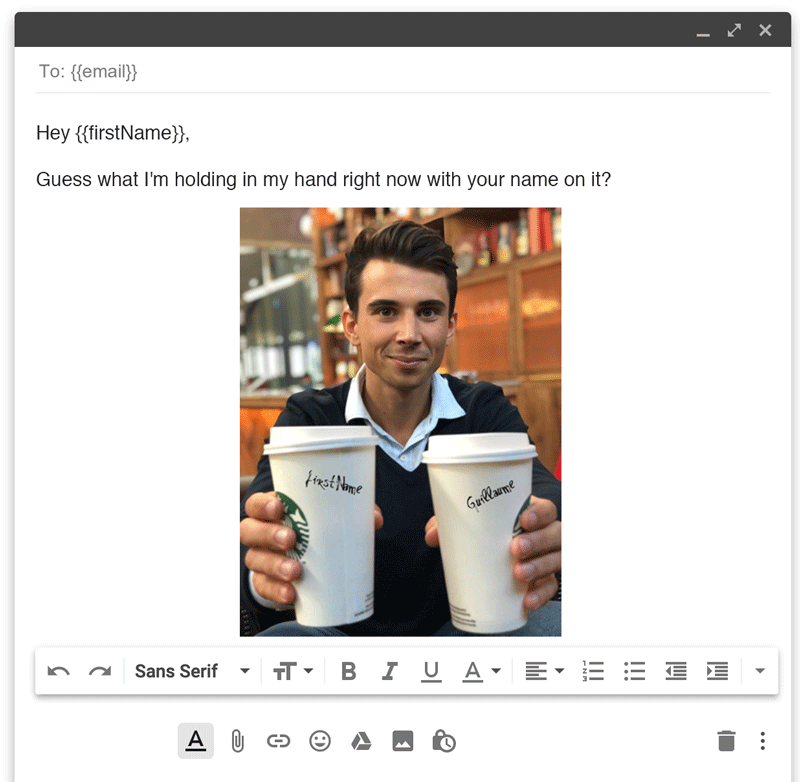
Let’s dive into some tips to pump up your email personalisation skills:
- Use the first name of the customer;
- Be there at the right time, make use of his time and location;
- Send educational emails;
- Set up automated replies and behavioural trigger emails.
5. Use A Newsletter Calendar To Stay Ahead Of Holidays
Plan ahead! Having a newsletter calendar makes sure your brand or company doesn’t miss out on opportunities to effectively communicate with your subscribers, capitalising on seasonal deals, and content. It’s like being at the right place at the right time, but via inbox. Planning in advance which holidays you will target will save you time, effort, and stress. But keep in mind that, according to data, shoppers tend to browse early with early holiday shopping begging mid-year.

This doesn’t actually mean consumers are making purchases, but it presents a great opportunity for persuading interest customers to shop with you. By leveraging trigger-based emails, as well as personalisation, you can make sure you’re targeting browsers with the right info at the right time.
6. Use A/B Testing To Optimise Your Emails
A/B testing is using multiple versions (Version A vs. Version B) of the same email, with tweaks to the subject line or email body, and analysing which one performs better. By doing this, you’ll be able to start identifying trends and common factors among your subscribers list and ultimately tailor your content. A/B Testing can:
- Increase your open and click-through rates;
- Increase your conversions and generate revenue;
- Show what works for your audience.
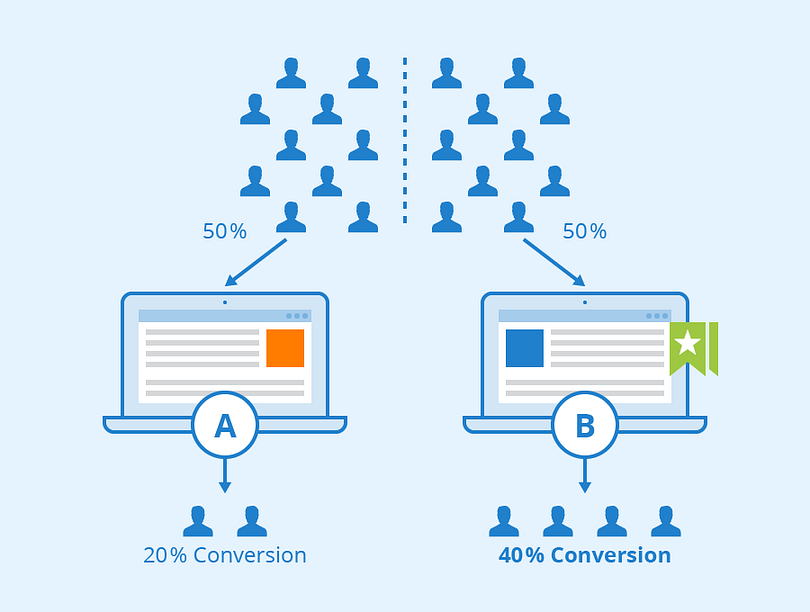
When it comes to which elements should be monitored on emailing A/B testing, marketers should focus on:
- Subject and Preheader (everything begins with a subject line. These highly valuable items that form the only touchpoint before an email is opened);
- Timings (try sending emails on different days of the week: GetResponse reports that Tuesdays get the best open rates compared to the rest of the week);
- Length (your emails’ ideal body length will mostly depend on your prospects’ expectations and your industry’s emailing practices);
- Visuals (you can try to run a Version A with no visuals [but the same subject line, body and CTAs] versus a Version B that contains visuals: you’ll see which one performs better);
- Copy
- Call to action buttons (try to compare different colors and formats to see if one stands out from the rest).
There are four main metrics that should you track in order to measure success:
- Open Rate;
- Click-through Rate;
- Response Rate;
- Subsequent Conversion Rate.
7. Keep Selling, Even In Transactional Emails
Transactional emails can increase revenue and engagement through behavioral triggers. Make sure to capitalise automated emails (such as order confirmations, shipping notifications, or subscription confirmations) to cross-promote products, services, or content. Don’t forget to add your social media accounts in these emails.
8. Coordinate Your Email Marketing With Other Paid Advertising Campaigns
Your audience is cross-platform so you should be fluent in email, content, and social media. And if you are paying for advertising your emails and advertising should be related.
Few people make buying decisions anymore based on information from a single medium. So when marketers focus all their energy on one channel, they could be missing out on other opportunities and the natural rhythms of the buying cycle.
In fact, according to a recent case study, cross channel coordination can be very effective. By coordinating email Marketing and Facebook Ads, a US online outdoor equipment and apparel company obtained interesting results:
- Coordinating messaging across channels resulted in reaching customers who were 22% more likely to purchase than those only reached by email and extending the email campaign reach by 77%.

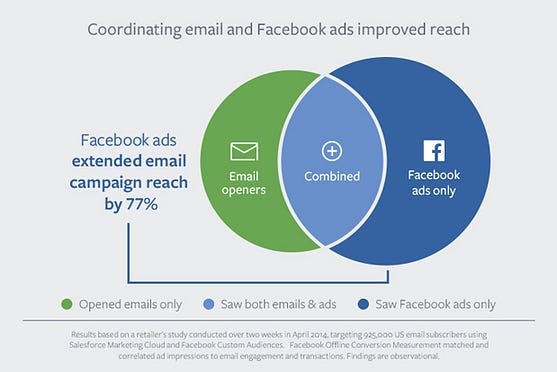
9. Build Conversion Opportunities Into Your Emails To Get People Used To Clicking
Add relevant call to action (CTAs) in every email you send. A high-converting email has optimised CTA’s that can be accomplished by the use of action-oriented text, visuals, or both. Make sure every CTA is large and legible, contrasting to the rest of the email.
It’s important for you to build numerous opportunities to get people to convert. CTA’s can be something as small as a “follow me on Instagram” badge or a button for something as valuable as a free e-book or other free online content. This will make your subscribers actively open and click through your content.
10. Say Thank You
Connect emotionally with your customers. Let them know their part of your successes, let them feel their part of your brand, company, or project. Share gratitude and milestones and show them you care. This will make things personal.
Are you ready to take your Email Marketing to the next level? Check out some in-depth resources at whitekube.com to get started!


